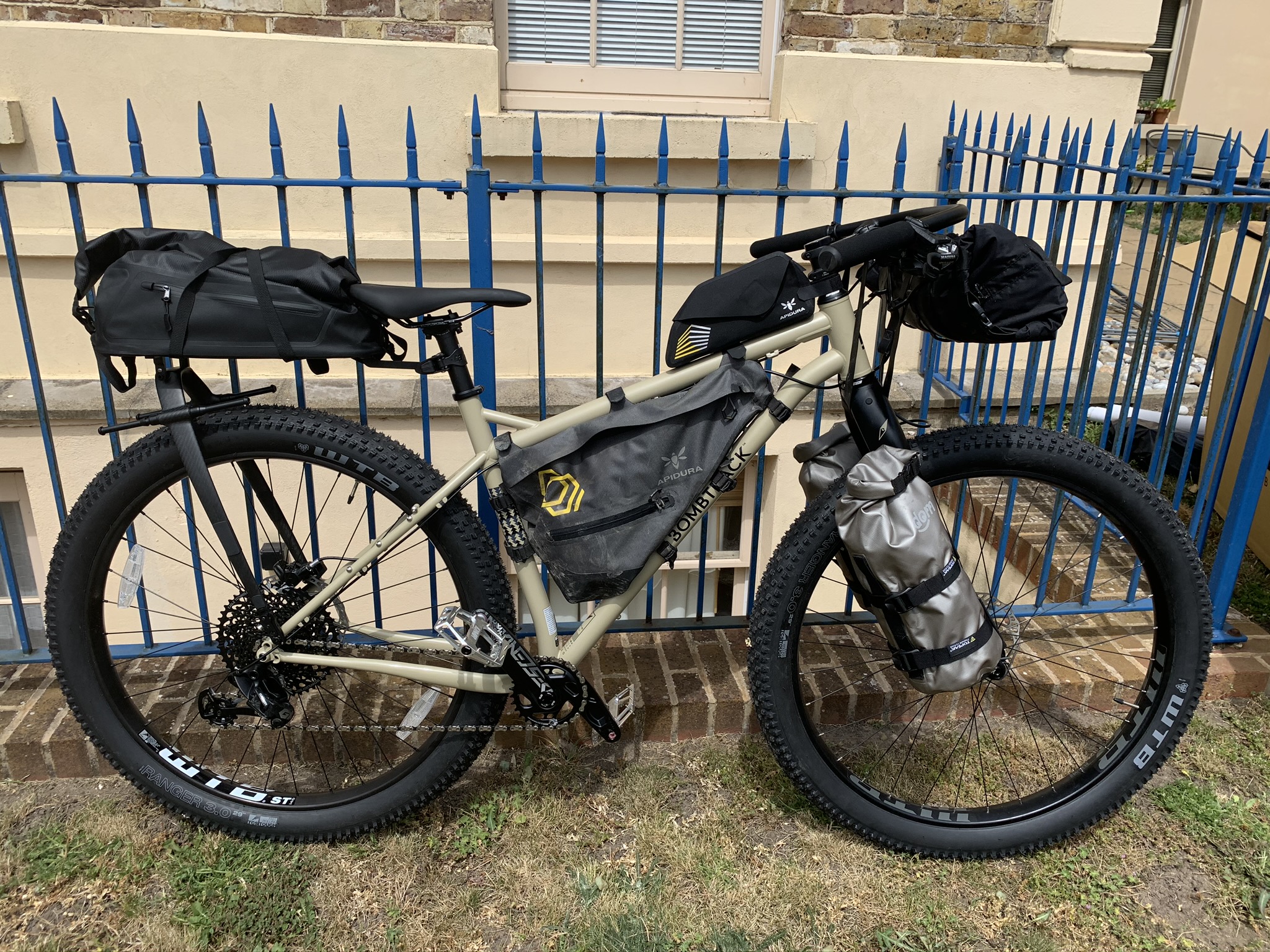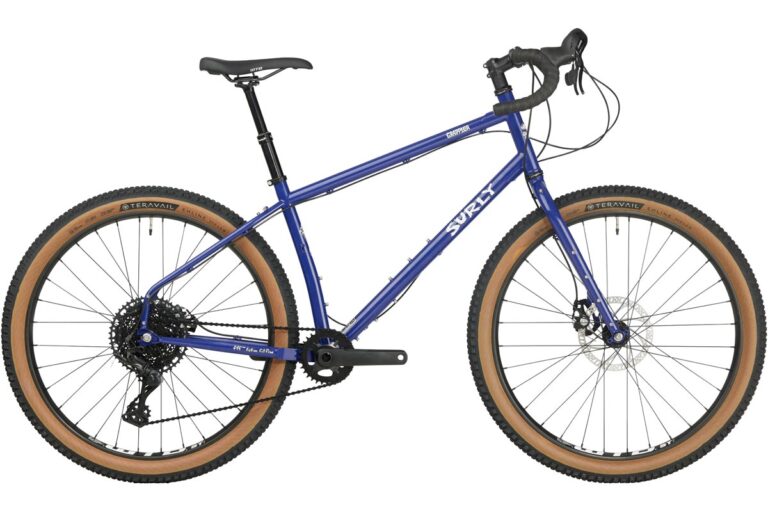Are you an adventure enthusiast, seeking to embark on thrilling bike packing expeditions? If so, then you’ve come to the right place!
In this comprehensive guide, we will navigate through the vast world of bikepacking bikes and help you find the perfect steed for your two-wheeled adventures.
Bike packing has gained immense popularity in recent years, as it allows riders to combine their love for cycling with the excitement of exploring remote trails and picturesque landscapes. But with a plethora of bike options available on the market, choosing the right one can be overwhelming. Fear not, for we are here to demystify the process and equip you with all the knowledge you need to make an informed decision.
Now, it’s time for the burning question: What is the best bike for bike packing? It’s a query that lingers in the mind of every cycling enthusiast eager to embark on an unforgettable journey, and today, we’ll uncover the answer.
Whether you’re a seasoned bike packer or new to this exhilarating pursuit, our ultimate guide will take you on a fascinating journey through the world of bikepacking bikes, shedding light on the key factors to consider when making this important investment. Join us as we delve into various bike types, frame materials, features, and more, to help you narrow down your choices and find the bike that perfectly aligns with your needs and aspirations.
So, gear up and let’s dive into the exciting realm of bikepacking bikes, where adventure awaits at every turn of the pedal!
Understanding Bikepacking Bikes: An Overview
Before we dive into the nitty-gritty details of choosing the best bike for bike packing, let’s start with a comprehensive overview of bikepacking bikes. These specialized bicycles are designed to handle the demands of off-road adventures while carrying all your gear.
Bikepacking bikes typically feature a sturdy frame, wide tires for enhanced stability and traction, and a range of mounting options for attaching racks, bags, and other gear. They are built to withstand rough terrains and long-distance rides, ensuring that you can explore remote trails without compromising on comfort or performance.
When it comes to bikepacking, there are several types of bikes to choose from:
- Mountain Bikes: Mountain bikes are a popular choice for bike packing due to their rugged construction and ability to handle challenging terrains. They offer excellent suspension systems and wider tires for enhanced stability on rough trails.
- Gravel Bikes: Gravel bikes strike a balance between road and mountain bikes. They feature drop handlebars like road bikes but have wider tires for improved off-road capabilities. Gravel bikes are versatile and well-suited for long-distance adventures.
- Touring Bikes: Touring bikes are designed specifically for long-distance travel with heavy loads. While they may not be as agile as mountain or gravel bikes, they excel in carrying capacity and stability.
No matter which type of bike you choose, it’s essential to consider factors such as frame material, components, and features that will enhance your bikepacking experience. Let’s explore these aspects in more detail.
Key Factors to Consider when Choosing a Bikepacking Bike
Selecting the right bikepacking bike involves evaluating various factors to ensure it meets your specific needs and preferences. Here are some key considerations:
1. Frame Geometry: The frame geometry determines the bike’s handling characteristics and comfort. Consider factors such as stack height, reach, and wheelbase to find a bike that offers a comfortable riding position for long hours in the saddle.
2. Tire Clearance: Opt for a bike with ample tire clearance to accommodate wider tires. This allows for better traction on rough terrains and increased stability when carrying heavy loads.
3. Mounting Options: Look for a bike that offers multiple mounting options, including rack mounts, bottle cage mounts, and fender mounts. These attachments allow you to carry all your gear efficiently.
4. Suspension: If you plan on tackling extremely rough terrains, consider a bike with front suspension or even full suspension for added comfort and control.
5. Gearing: Choose a bike with a wide range of gears to tackle steep climbs and fast descents effortlessly.
The Pros and Cons of Different Frame Materials
The frame material plays a crucial role in determining the overall weight, durability, and ride quality of your bikepacking bike. Here are some common frame materials along with their pros and cons:
- Steel: Steel frames offer excellent durability, comfort, and repairability. They can absorb vibrations well but tend to be heavier compared to other materials.
- Aluminum: Aluminum frames are lightweight, stiff, and affordable. However, they may transmit more vibrations than steel frames.
- Titanium: Titanium frames provide a smooth and comfortable ride, along with excellent durability. They are also corrosion-resistant. However, titanium frames can be expensive.
- Carbon Fiber: Carbon fiber frames are lightweight, stiff, and offer excellent vibration damping properties. They are often the top choice for high-end bikepacking bikes. However, carbon fiber frames can be expensive to repair.
Consider your budget, riding style, and preferences when choosing the frame material that suits you best.
Essential Features and Components for Bikepacking
When selecting a bikepacking bike, there are several essential features and components to look out for:
1. Brakes: Opt for reliable disc brakes that provide consistent stopping power even in wet or muddy conditions.
2. Drivetrain: Choose a drivetrain with a wide gear range to tackle various terrains comfortably.
3. Wheels: Look for durable wheels that can handle rough trails without compromising on performance.
4. Handlebars: Consider handlebars that offer multiple hand positions for enhanced comfort during long rides.
5. Saddle: Invest in a comfortable saddle that suits your anatomy and provides support during long hours in the saddle.
Making Your Decision: Evaluating and Comparing Options
The final step in choosing the best bikepacking bike is evaluating and comparing your options based on your budget, riding style, and specific requirements. Visit local bike shops to test ride different models or consider renting bikes before making a purchase decision.
Talk to experienced bikepackers or join online forums to gather insights from fellow enthusiasts who have firsthand experience with different bikes. Reading reviews and seeking professional advice can also help you make an informed decision.
Remember, the best bike for bike packing is the one that aligns with your individual needs and aspirations. Take your time, do thorough research, and choose a bike that will accompany you on countless memorable adventures.






